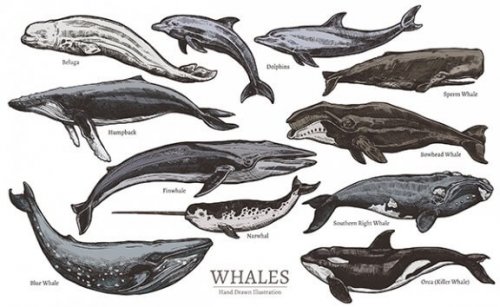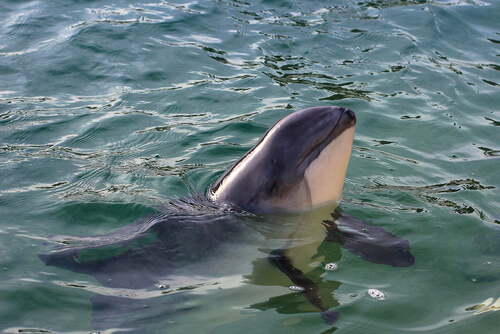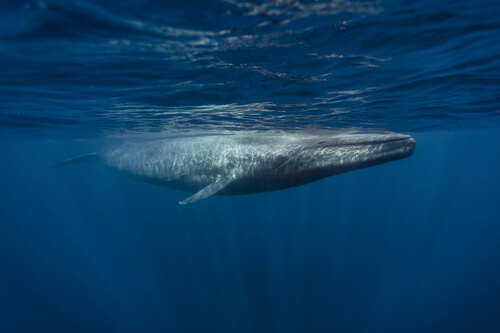Cetacean Species and Their Classification

Over the years, many scientists have dedicated their lives to the study of cetacean species. With their unique morphological and physiological features, cetaceans have always attracted great attention from researchers.
Cetaceans are defined as eutherian marine mammals. The word eutherian refers to a subclass of mammals, all of which have a placenta. This is a trait which is quite rare in marine mammals.
The name cetacean comes from the Greek word ketos, which means “sea monster”. According to Aristotle, who was the first to coin the term, whales were monstrous animals.
The Greeks defined ketos as all marine animals with lungs. While they are otherwise well-adapted to marine life, they can’t breathe underwater. As a result, all cetaceans need to return to the surface to breathe.
Cetaceans come in all different shapes and sizes. Some, like porpoises, are small in size, while others, such as sperm whales, are huge.

Cetaceans evolved from semi-aquatic animals. Just like members of the Otariidae family, the back legs eventually evolved into flippers. Over time, the lower half of their body slowly transformed into a caudal tail.
Because their tails point horizontally, they are able to swim toward the surface more easily. Usually, ketos have one or several blowholes on the top of their heads, through which they can breathe air when they reach the surface.
Cetacea can be categorized into different species depending on their morphology. If you want to know more about cetaceans, this is the article for you.
Cetacean species: classification
Cetaceans can be classified into three sub-types: Archaeoceti, Mysticeti and Odontoceti. The Archaeoceti group contains already extinct species.
The Mysticeti suborder contains baleen whales, which have a filter-feeder system. This group contains some of the largest animals in the world, such as whales and rorquals.
While they might not have teeth, the mysticeti suborder contains four families of cetacea. These animals have baleen pallets on the top portion of their mouths, made up of thousands of keratin bristles. These bristles help to filter the water as it leaves the mouth, trapping any food inside.
The thick layer of blubber below their skin means that cetaceans can withstand extremely cold temperatures. Plus, their lungs have an 80% oxygen capacity.

The third group of cetacea are the odontocetes, or toothed whales. As the name suggests, this group contains species which have teeth.
Unlike the enormous mysticeti, Odontoceti come in a whole range of sizes, from dolphins and orca, to sperm whales, porpoises and vaquita. Thanks to the prominent dorsal fin on their backs, it’s easy to distinguish them from Mysticeti.
One unusual characteristic of the Odontoceti is their large foreheads. Beneath this strange protrusion is a rather special organ, known as the melon. This organ plays a key role in a dolphin’s sonar. The animal produces sound waves that bounce off objects in the ocean. When the sound waves come back, it uses the melon to determine the location of all the elements around it. This is why it is known as echolocation.
Cetacean species: from whales to dolphins
The cetacean class contains many different species. Among them, you’ll find species such as whales, humpback whales, dolphins, porpoises, sperm whales, beaked whales and belugas.
Whales
Whales are classified into three families: Balaenidae, Eschrichtiidae and Neobalaenidae. All three families contain large cetacean species with relatively long lifespans.
Whales can live around 30 years. On average, they measure between 16 and 55 ft, and weigh up to 176,370 lbs.
However, rorquals are even larger than whales, measuring up to 115 ft in length, and weighing more than 370,000 lbs. The folds of their throat can expand to store up to 200,000 lbs of water. This is the only way it can consume enough krill to sustain itself.

Dolphins
Perhaps the most common cetaceans are dolphins. Among them you will find orca, which are known for their speed and aggression. Dolphins can measure between 6.5 ft and 30 ft, and their bodies have evolved to give them maximum speed in the water.
Because they are odontocetes, all dolphins possess a “melon” for echolocation. As a result, dolphins are characterized by their protruding foreheads. They are also highly intelligent animals, with much higher IQs than other species.
There are many other cetaceans in the world. However, over the last few years, there has been a huge decline in their numbers.
While many governments have introduced laws to protect certain species, these animals remain at risk of extinction. While it has slowly begun to die out, whale hunting is still a common practice in many countries.
We hope that in the next few years, cetaceans will start to recover, and the number of endangered species will fall.
All cited sources were thoroughly reviewed by our team to ensure their quality, reliability, currency, and validity. The bibliography of this article was considered reliable and of academic or scientific accuracy.
- Aguayo-Lobo, A. (1999) Los cetáceos y sus perspectivas de conservación. Instituto Antártico Chileno, Chile.